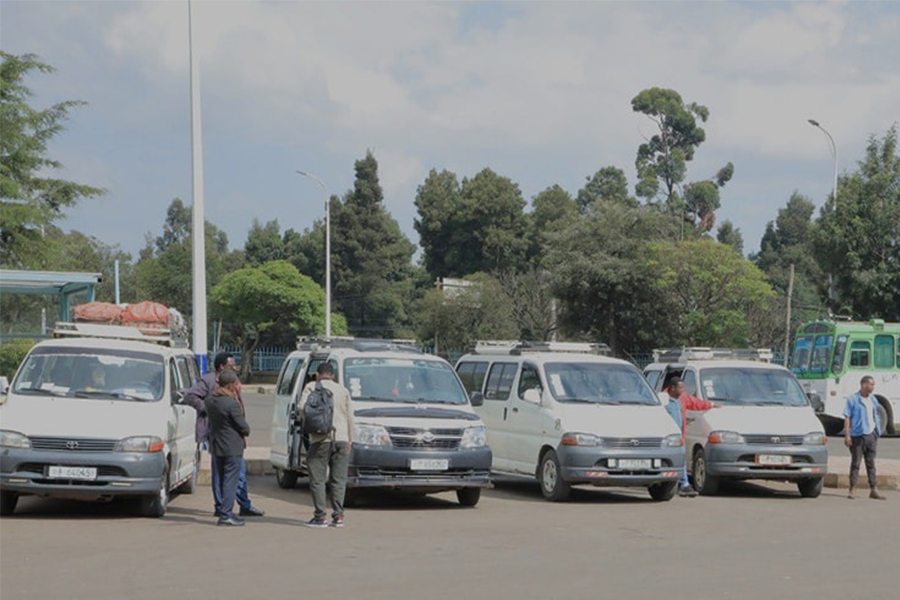
Fortune News | Apr 03,2021
Exporters of Khat must present contracts with overseas buyers before permitted to send abroad, Gebremeskel Chala, minister of Trade & Regional Integration (MoTRI), decreed.
A growing ‘illicit trade’ alarmed the Minister and his officers to introduce stringent export procedures. A week before the decision to impose strict rules, experts identified hundreds of exporters suspected of practising under-invoicing. It is a misrepresentation of the prices of goods or services designed to transfer additional value between the exporter and buyers overseas. Over-invoicing of exports is one of the most common trade-based methods used to move money.
Since last September, the Minister and his officers have been urging khat exporters to shy away from the practice, threatening to take measures against those failing to comply. Two weeks ago, the authorities revoked the trade licenses of 830 khat exporters following investigations.
Exporters are expected to submit a bill of exchange – a binding order used primarily in international trade – under the new requirements.
"It's necessary to ensure the country is generating foreign currency," said Mesfin Abebe, director of agricultural crop exports and marketing at the Trade Ministry.
Experts warn that this could be a move that will frustrate exporters. Adane Tuffa (PhD), an economist and member of the Agricultural Economics Society of Ethiopia, foresees that strict export procedures might discourage exports.
“This will profoundly affect the foreign currency generation,” he cautioned.
Khat has been among the top-five revenue-generating export commodities since the early 2000s. It accounted for 11pc of the 3.6 billion dollars generated last year. Officials eye 413 million dollars from khat exports this year. A little more than half was met over the first eight months of the fiscal year by close to 1,000 exporters registered at the federal level. The cash crop is among the agricultural commodities that make up 70pc of all export earnings, trailing behind coffee and cut flowers.
Nearly a quarter of khat produced last year was exported to Djibouti and Somalia. Consumers in these countries bought 710,000qtl of khat last year, with almost 80pc going to the latter. Last month, the Ministry doubled the price threshold for khat exports to Somalia to 10 dollars a kilo, while the threshold for exports to Djibouti stands at four dollars less.
This may have pushed Somalia to open its borders to Kenyan exporters six years after it imposed a ban. Kenya's President Uhuru Kenyatta was in Mogadishu last week attending the inauguration of Somalia's new President, Hassan Sheikh Mohamud (HSM), where a deal to resume Khat exports from his country was reached.
Exporters of Khat from Ethiopia are now required to be registered with the Ministry. Mesfin says the Ministry wants to follow up on the exporters' activities more closely. Previously, the National Bank of Ethiopia (NBE) was mandated to issue permits to khat exporters.
Zaid Ali, general manager of Fami Ziyad Muhammed Import-Export Plc, exports since 2004 to Djibouti, Somalia and Australia. Last week, he travelled to Addis Abeba from Dire Dawa to renew his permit. “Although there is a market for Khat, generating foreign currency above the threshold has been challenging,” said Zaid.
Exporters who ship khat to countries other than Djibouti and Somalia must remit at least 35 dollars a kilo.
Khat is popular in East Africa and the Arabian Peninsula, with up to 10 million people consuming it daily. The growing demand for stimulants pushes farmers to turn to grow khat, abandoning grains. A decade ago, 1.7 million farmers were cultivating khat. The number had swelled to 4.1 million last year. Annual harvests have tripled to a little more than three million quintals over the same period, while the area covered by the cash crop jumped by over 200pc to 340,000hct.
“Few exporters are willing to comply with the new procedures,” said Zaid.
His company is one of 300 khat exporters registered in Dire Dawa, a trade hub. Located 509Km east of Addis Abeba, the town is close to two of the major export destinations, as well as the country's primary khat growing areas.
Ethiopia is the leading khat producer, with its southeastern belt covering the majority of khat farms. The Oromia Regional State is the top producer with 1.3 million quintals yearly, followed by the South-Western and Sidama regional states. They each produce 650,000qtl a year.
PUBLISHED ON
Jun 11,2022 [ VOL
23 , NO
1154]

Fortune News | Apr 03,2021

Fortune News | Sep 06,2020

Radar | Sep 29,2024

Radar | Apr 24,2023

Fortune News | Jan 28,2023

Dec 22 , 2024 . By TIZITA SHEWAFERAW
Charged with transforming colossal state-owned enterprises into modern and competitiv...

Aug 18 , 2024 . By AKSAH ITALO
Although predictable Yonas Zerihun's job in the ride-hailing service is not immune to...

Jul 28 , 2024 . By TIZITA SHEWAFERAW
Unhabitual, perhaps too many, Samuel Gebreyohannes, 38, used to occasionally enjoy a couple of beers at breakfast. However, he recently swit...

Jul 13 , 2024 . By AKSAH ITALO
Investors who rely on tractors, trucks, and field vehicles for commuting, transporting commodities, and f...

Oct 4 , 2025
Eyob Tekalegn (PhD) had been in the Governor's chair for only weeks when, on Septembe...

Sep 27 , 2025
Four years into an experiment with “shock therapy” in education, the national moo...

Sep 20 , 2025
Getachew Reda's return to the national stage was always going to stir attention. Once...

Sep 13 , 2025
At its launch in Nairobi two years ago, the Africa Climate Summit was billed as the f...